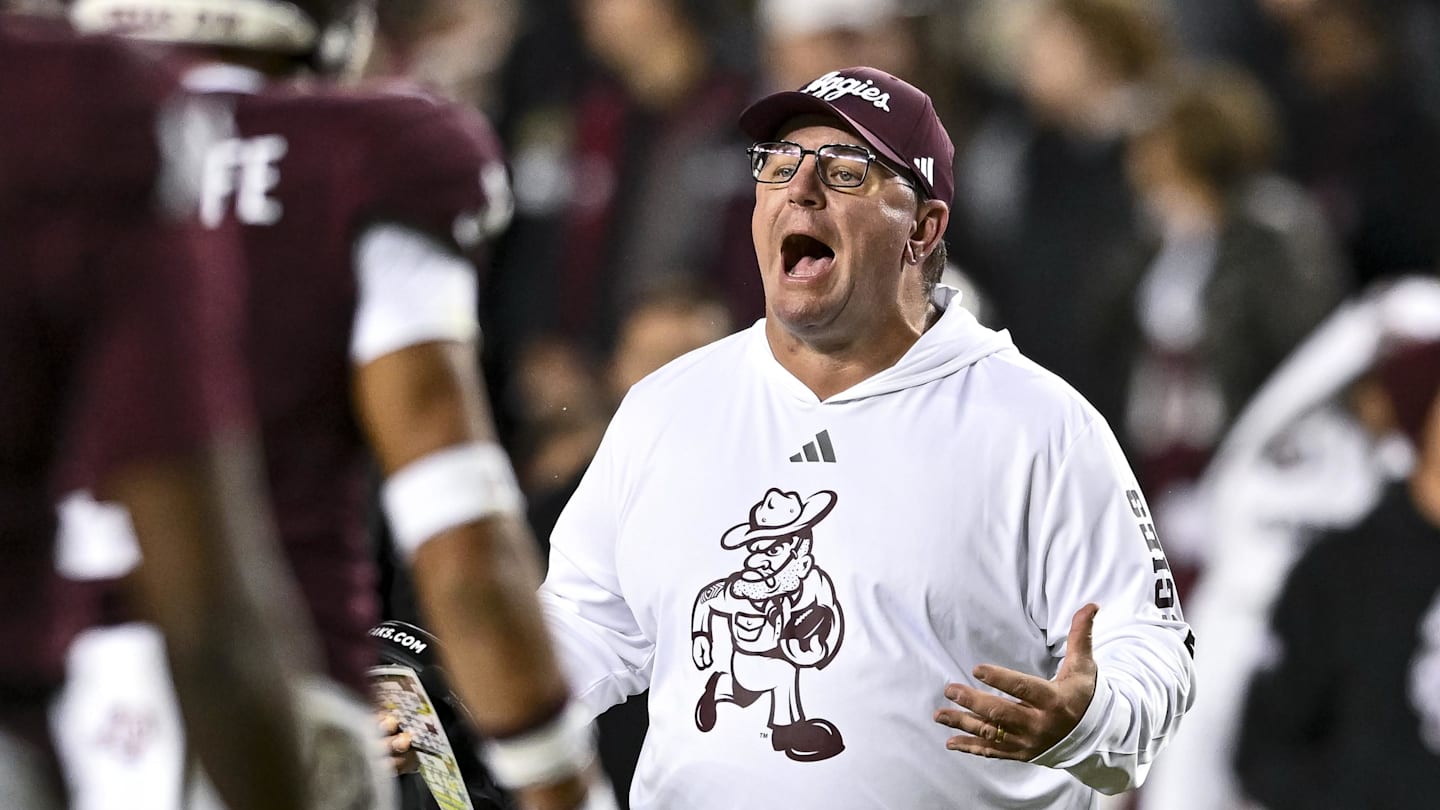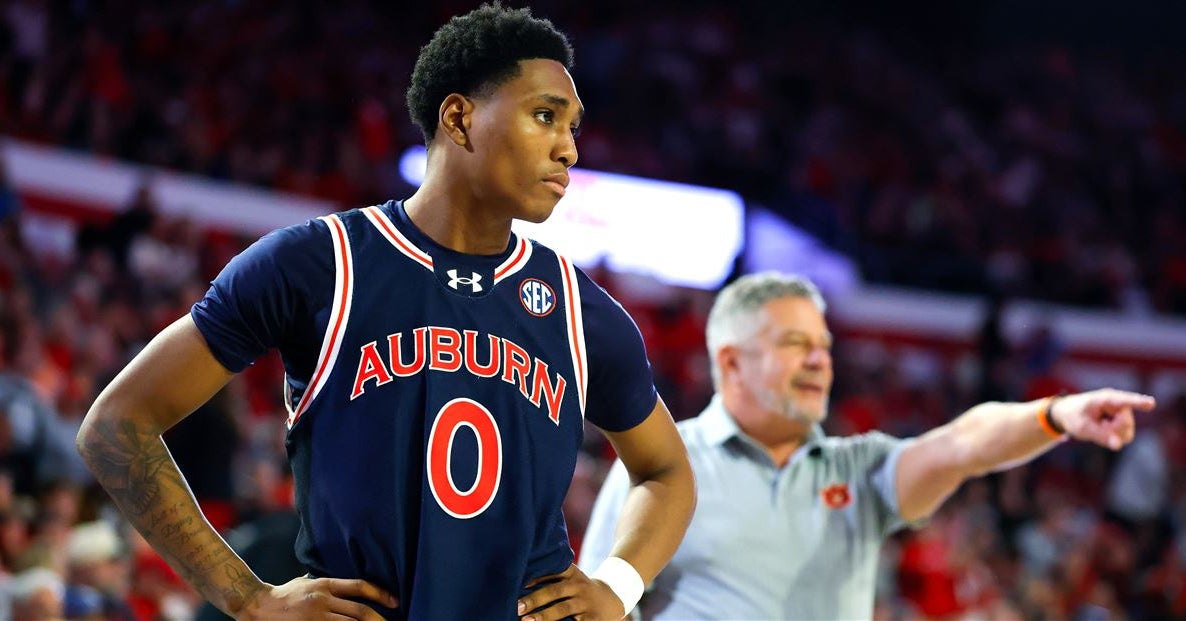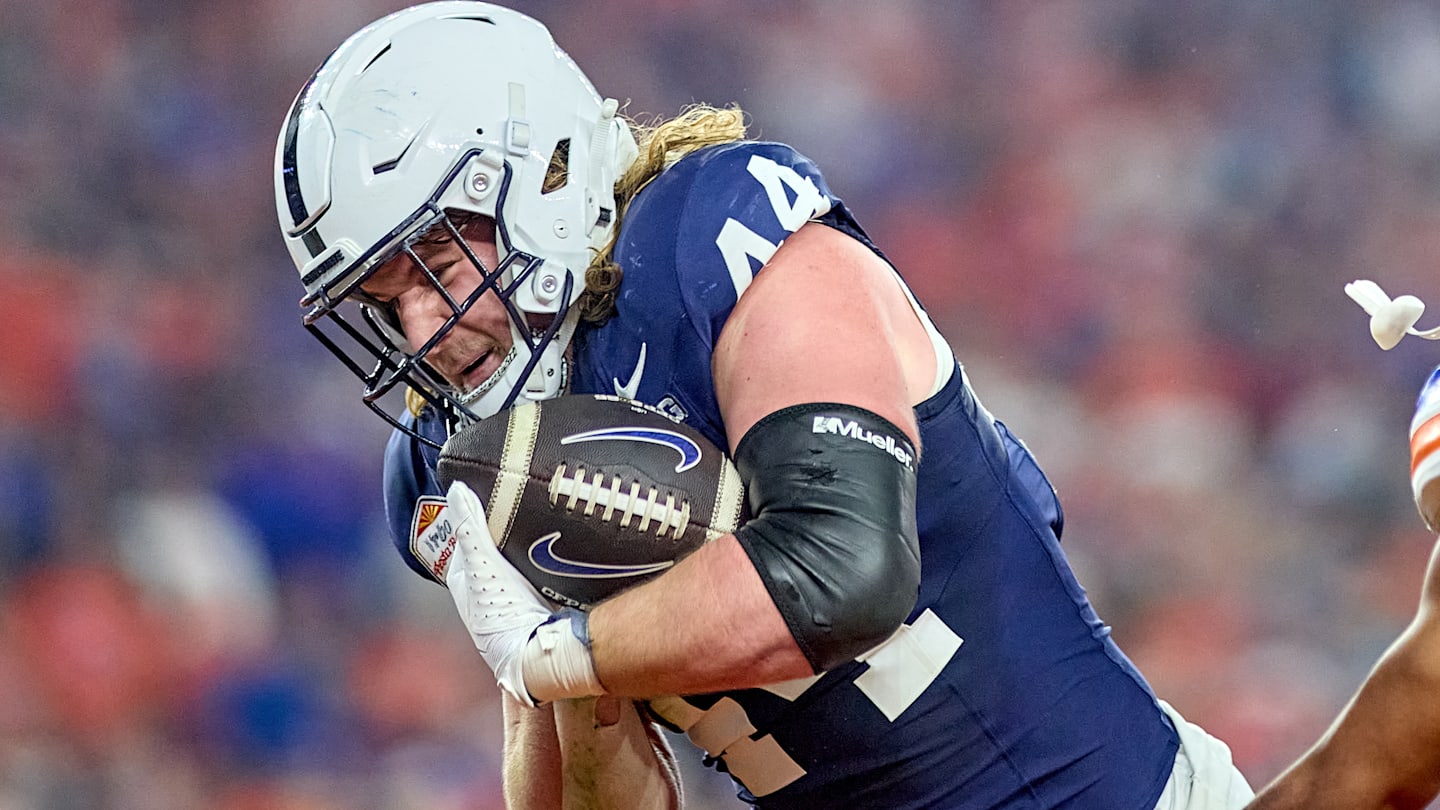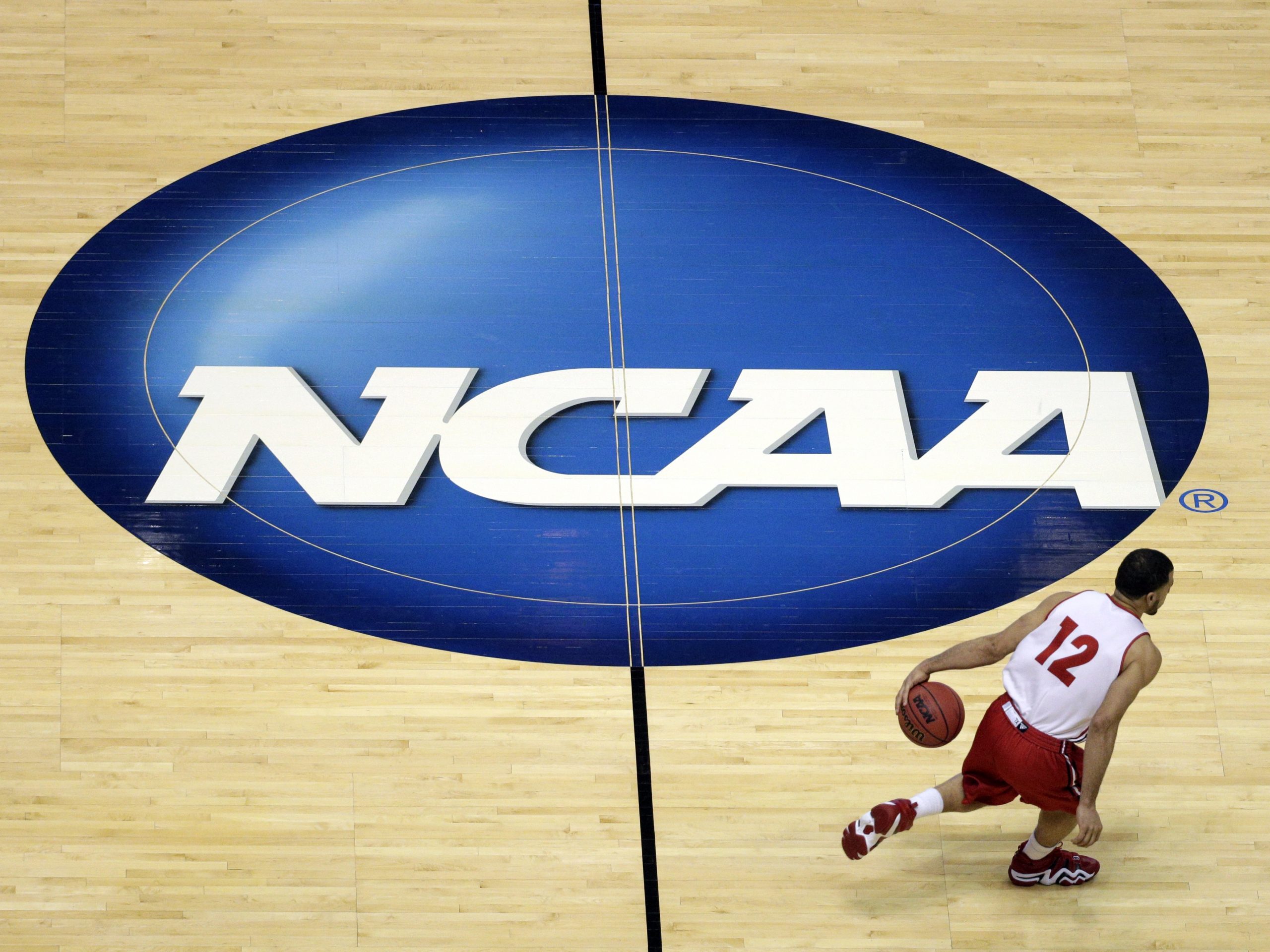NIL
What went wrong for Cougars in 2025? Inability to close didn't help
When the BYU men’s volleyball season ended in a fifth-set defeat to Stanford last month in the MPSF tournament, it struck a nerve — a nagging nerve that plagued the Cougars on multiple occasions in big moments throughout the season. “Unfortunately, throughout the course of the year, we struggled to finish,” BYU coach Shawn Olmstead […]


When the BYU men’s volleyball season ended in a fifth-set defeat to Stanford last month in the MPSF tournament, it struck a nerve — a nagging nerve that plagued the Cougars on multiple occasions in big moments throughout the season.
“Unfortunately, throughout the course of the year, we struggled to finish,” BYU coach Shawn Olmstead said. “We got ourselves in positions where we had every opportunity to (win).”
After getting to those positions, the school faltered on a few too many occasions — Stanford proving to be the last straw.

Special Collector’s Issue: “1984: The Year BYU was Second to None”
Get an inclusive look inside BYU Football’s 1984 National Championship season.
In their final match of the year, the Cougars led late in the first set before watching the Cardinal roar past them, scoring nine of the final 12 points to beat a bewildered BYU 25-23.
“Every year we’re trying to figure out how we can get a little bit better attacking out at the pins; how we can get better from the service line,” Olmstead said. “Those are the keys to this game, to our level.”
— BYU coach Shawn Olmstead
Stanford then cobbled together a similar ending in the final moments of the third set, using an 8-2 run that snatched a victory from the Cougars — who had three set-point opportunities — for a 27-25 triumph. The Cardinal sealed the match in a fifth-set victory that they never trailed.
“We had many opportunities to just capitalize and put away a set, and we didn’t,” Olmstead said of the match against Stanford. “We couldn’t put together the things (we needed to) down the stretch.”
BYU had similar opportunities slip through its fingertips in matches throughout the season — against No. 5 UC Irvine, No. 3 Hawaii, No. 6 USC and No. 2 UCLA.
“That kind of kept biting us in the butt,” Olmstead said. “We couldn’t overcome that. (Things) didn’t go the way we anticipated.”
Despite the Cougars’ nagging inconsistencies in some of their biggest moments of the year, they still finished with a No. 8 national ranking and 11 victories over teams that were listed in the final AVCA poll. The school’s greatest feat proved to be a pair of wins against MPSF tournament champion and No. 4 Pepperdine to close out the regular season.
“You try to learn from the great moments and you learn from the tough moments,” Olmstead said. “I thought we should have accomplished a little bit more down the stretch. And I think the guys feel that too and so that’s hard because a lot of those guys aren’t going to be with us next year. We’re going to be kind of a brand-new team.”
With the departure of five seniors, new NCAA roster regulations, and transfers, BYU could see more player turnover than normal this offseason.
“We knew that with the changing landscape of the NCAA and what is on the horizon … that the transfer portal was going to look … different than it has in years past,” Olmstead said. “We were right into the transfer portal immediately.”
The transfer portal has already yielded results for Olmstead and his staff as they retool the roster for 2026. Olmstead says next season the school will have more transfer players than it ever has had.
“I’m not allowed to comment on them specifically, because they’re going through the normal admissions that any athlete does in the transfer portal,” Olmstead said. “All of them are … guys that have played a lot in their respective programs, quite a bit actually. One of them is an All-American at (his) former school.”
BYU could look a lot different come next season, but it all is motivated by its desire to improve.
“Every year we’re trying to figure out how we can get a little bit better attacking out at the pins; how we can get better from the service line,” Olmstead said. “Those are the keys to this game, to our level.”
The Cougars won’t be able to get back together for official practices until school resumes next fall; however, Olmstead and his staff are staying busy doing all they can to address their team’s needs over the summer. They don’t want another season to end, feeling their team didn’t maximize its potential.
NIL
Mike Elko smacks down wild NIL rumor about star transfer wide receiver
KC Concepcion is set to be one of the most important players for Texas A&M football next season. The star wide receiver, a transfer from NC State, comes to the Aggies after two highly productive years up in Raleigh, and was one of the most highly-coveted players in the transfer portal. In this modern era […]

KC Concepcion is set to be one of the most important players for Texas A&M football next season. The star wide receiver, a transfer from NC State, comes to the Aggies after two highly productive years up in Raleigh, and was one of the most highly-coveted players in the transfer portal.
In this modern era of college football, then, this means that most fans conclude that he will command a high amount of leverage when it comes to NIL compensation. So no one was surprised when a number began circulating recently of 2.5MM total compensation for Concepcion in this upcoming year.
As a matter of fact, I took that reporting to mean that the Aggies were taking the next step to be competitive in the NIL space. There’s a lot that’s still opaque about amounts that certain players are earning, and the lack of transparency makes things difficult, but it didn’t seem out of the question that Concepcion could be earning that much from the collective and other deals.
Mike Elko dismisses rumored, eye-popping NIL amount for KC Concepcion: “He does not have that much money”
However, Mike Elko at a coach’s night last night had some definitive words about such rumors.
When talking about Texas A&M transfer wide receiver KC Concepcion, Mike Elko took a moment to dispel some of the NIL reporting on him. Reports came out last week that said Concepcion has made more than $2 million in NIL deals:
“He does not have that much money.”
— 𝕋𝕣𝕒𝕧𝕚𝕤 𝕃. 𝔹𝕣𝕠𝕨𝕟 (@Travis_L_Brown) June 18, 2025
This does not necessarily mean that the Aggies are not competitive on the NIL front: I don’t think that they would have a guy like Concepcion on the team if they weren’t competitive. It clearly is not their entire pitch to any recruit, unlike certain schools.
But it’s good for Elko to address these things in one way, because it can lead to other recruits being of the belief that, if they are offered less, they are being lowballed. If that’s not the case, then it doesn’t help anyone.
This was a smart move by Elko to dismiss this rumor. It’s hard to be upfront as a modern college football program, but the strategic way that Elko is doing so is paying off.
NIL
‘New’ NIL rules good or bad for Buckeyes?
When Ohio State athletics boss Ross Bjork took the stage last week and clued us in on all the new NIL rules, what did you think? How will the Buckeyes fare in the updated era? Can they remain atop the food chain? Is it … you know … good to be King? We welcome in […]

When Ohio State athletics boss Ross Bjork took the stage last week and clued us in on all the new NIL rules, what did you think?
How will the Buckeyes fare in the updated era? Can they remain atop the food chain? Is it … you know … good to be King?
We welcome in The People’s Champ – Matt Baxendell – to dive deep on all the changes and possible ramifications.
How will it all look when practically applied by the NCAA and sheriffed by Deloitte, a multinational professional services network and one of the Big Four accounting firms?
Is the city of Columbus now THE ideal college town (if it wasn’t already)?
What other programs are in a similar spot to Ohio State?
In the end … is it good or bad for the Buckeyes?
Spend 5ish with us this a.m., ‘Nutters!
What’s next for the Buckeyes? Make sure you’re in the loop — take five seconds to sign up for our FREE Buckeyes newsletter now!
FOR YOUR LISTENING PLEASURE
The Bucknuts Morning 5 is available on Apple Podcasts, Spotify, YouTube and more:
* Click here to listen to the show via Apple Podcasts.
* Click here to listen to the show on Spotify.
* Click here to listen on YouTube.
* Click here to listen to the show as an MP3 file on your computer, tablet or phone.
* Or listen directly to our Megaphone embed atop this page.
NIL
NCAA proposes multiple softball rule changes, clarifies obstruction
The NCAA softball rules committee proposed multiple rule changes for the 2025-26 season. Additionally, the committee clarified obstruction. The recommended changes include a modified illegally batted ball, meaning it would be a dead ball call if a player has one foot completely out of a batter’s box. A double first base was also part of […]

The NCAA softball rules committee proposed multiple rule changes for the 2025-26 season. Additionally, the committee clarified obstruction.
The recommended changes include a modified illegally batted ball, meaning it would be a dead ball call if a player has one foot completely out of a batter’s box. A double first base was also part of the proposal as committee members argued it would create a clearer running lane between home plate and first base. Baseball approved a double first base for this current season.
Obstruction took center stage at this year’s Women’s College World Series, though. Some controversial reviews took place, and the committee clarified the rule. Obstruction occurs when a player does not have possession of the ball and either blocks any part of the leading edge of a base or otherwise blocks the runner from advancing or returning.
One note in the clarification centered around if the runner would clearly be out regardless of obstruction. Note No. 5 reads, “If the base runner would have been out, regardless of the defensive player’s movement or positioning, which had no effect on the play, the runner would remain out, and the obstruction would be ignored.” The previous clarification left it up to umpire’s judgment.
“By clarifying this rule, it allows our athletes to make softball plays,” said Tina Phillips, Pitt-Bradford coach and chair of the committee. “We wanted to avoid the scenarios where someone is safe due to a technicality.”
Obstruction became key WCWS storyline
One of the key moments involving an obstruction call came in the Women’s College World Series final between Texas and Texas Tech. Longhorns infielder Leighann Goode went to tag Red Raiders baserunner Logan Halleman out on a stolen base attempt. Goode placed the tag well before Halleman got to the base, but Texas Tech coach Gerry Glasco challenged the call and argued Goode obstructed.
Umpires overturned the call after a review, and the reaction was swift as criticism came in from around the sport. ESPN’s Jessica Mendoza was among the voices calling for the NCAA to change the rule.
The NCAA changed the obstruction rule for the 2024 and 2025 seasons. The goal is to allow a runner a path to the base while running on a live ball. A play is deemed to be obstruction if a defensive player blocks any part of the leading edge of a base – including home plate – or “otherwise blocks the runner from advancing or returning to a base,” according to Rule 9.5.1.
“Obstruction occurs when a defensive player, neither in possession of the ball nor in the act of fielding a batted ball, impedes a batter’s attempt to make contact with a pitch or impedes the progress of any runner who is legally running bases on a live ball,” the rule states. “It can be intentional or unintentional.”
NIL
Auburn basketball’s 2025-26 SEC opponents announced
The SEC was its best, maybe ever, last season, and Auburn emerged as the outright champion. What do the new-look Tigers have in store for an encore? Auburn basketball got a better idea of what its conference schedule will look like Wednesday morning, when the SEC unveiled opponents and locations for each team’s 18 conference […]

The SEC was its best, maybe ever, last season, and Auburn emerged as the outright champion. What do the new-look Tigers have in store for an encore?
Auburn basketball got a better idea of what its conference schedule will look like Wednesday morning, when the SEC unveiled opponents and locations for each team’s 18 conference games.
Here are Auburn’s designations for next season, with the most notable change that Arkansas is now a home-and-home opponent, replacing Georgia. So that means, under the league’s new scheduling model, Alabama and Ole Miss will be the Tigers’ permanent home-and-home foes, with the third spot able to be rotated every year.
- HOME AND AWAY: Alabama, Ole Miss, Arkansas
- HOME ONLY: Kentucky, LSU, South Carolina, Texas, Texas A&M, Vanderbilt
- AWAY ONLY: Florida, Georgia, Mississippi State, Missouri, Oklahoma, Tennessee
Next season will mark the first time since 2014 that Auburn will not play rival Georgia twice in a regular season.
Exact dates for each SEC game will be announced closer to the season; last year they were announced in August.
Auburn went 15-3 last season and won the league outright in a loaded SEC that earned a record 14 NCAA Tournament bids. The Tigers went on to their second Final Four under Bruce Pearl, then had to replace every scholarship player from the team, with the exception of point guard Tahaad Pettiford who opted to return from the NBA draft process.
Auburn added four players from the transfer portal — UCF forward Keyshawn Hall, Mississippi State big man KeShawn Murphy, Texas Tech guard Kevin Overton and Lincoln Memorial wing Elyjah Freeman — along with JUCO pickups Abdul Bashir, a guard, and Emeka Opurum, a center. Auburn also landed a commitment from Serbian forward Filip Jovic.
The Tigers bring in the nation’s No. 14-ranked freshman class with forward Sebastian Williams-Adams, point guard Kaden Magwood and shooting guard Simon Walker.
NIL
Penn State football and softball represent the Nittany Lions as Big Ten Medal of Honor recipients
The Big Ten Medal of Honor recipients were announced on Tuesday, June 17. The award is given to one male and one female student-athlete of the graduating class in each school in the conference that “demonstrated excellence on and off the field throughout their college career.” It is considered the highest honor awarded in the Big […]

The Big Ten Medal of Honor recipients were announced on Tuesday, June 17. The award is given to one male and one female student-athlete of the graduating class in each school in the conference that “demonstrated excellence on and off the field throughout their college career.” It is considered the highest honor awarded in the Big Ten.
This year, Nittany Lions of Penn State football and softball received the Big Ten Medal of Honor.
Congratulations to our @bigten Medal of Honor winners!
Maddie Gordon (@PennStateSB)
Tyler Warren (@PennStateFball)#WeAre | https://t.co/YutvYLn7Sw pic.twitter.com/ecQuZK2VgR
— Penn State Athletics (@GoPSUsports) June 17, 2025
Tight end Tyler Warren receives Big Ten Medal of Honor
Warren, who was recently drafted No. 14 overall by the Indianapolis Colts, was named the male recipient of the Big Ten Medal of Honor.
With the Nittany Lions on the field, he finished his NCAA career with a total of 153 receptions, 1,839 receiving yards, 19 receiving touchdowns, 32 carries, 224 rushing yards, and six rushing touchdowns. He had five, 100-yard games as well at Penn State. Leaving the Nittany Lions, he leads the program’s tight ends in total touchdowns, receptions, receiving yards, receiving touchdowns, and 100-yard games. Warren is also tied at fourth among tight ends in the Big Ten for career receptions and receiving touchdowns.

In his senior season alone, he had 104 receptions for 1,233 yards, averaging 11.9 yards per catch, and eight receiving touchdowns. Warren also had 26 rushing attempts for 218 yards and four rushing touchdowns. He finished seventh in the Heisman Trophy voting, was honored as the Fiesta Bowl Offensive Player of the Game, and won the John Mackey Award.
In the classroom, he earned his first degree in Fall 2023 in advertising and public relations with a 3.36 cumulative GPA. Warren then completed his second degree in telecommunications in Fall 2024. His academics led him to be a semifinalist for the Campbell Trophy (AKA the “Academic Heisman”).
Utility player Maddie Gordon receives Big Ten Medal of Honor
Gordon, a three-year graduate from Penn State, was honored as the female recipient of the Big Ten Medal of Honor.
She had a breakout season as a junior, leading her to being named to the NFCA All-Great Lakes Region Second Team. Gordon was also selected to the Second Team All-Big Ten. She joined three other players in program history to start in all 55 games, according to Penn State Athletics, which is unsurprising given her program-high at-bats, runs scored, home runs, RBIs, total bases, and slugging percentage in a single season. Gordon hit .342 with 12 home runs and a 1.122 on-base plus slugging as a junior.
She also helped her team make the NCAA Tournament for the first time since 2011. Gordon’s breakout year also moved her to fourth in Penn State batting history for most home run hits. She was considered one of the all-around batting stars for the Nittany Lions.
Off the field, she completed a double major with a cumulative 3.93 GPA in recreation, park, and tourism management and human development and family studies. Her thesis was based around spreading mental health awareness and fostering support for student-athletes. She was an active member of Penn State’s community as a member of the university’s Student-Athlete Advisory Committee, the Athletic Department Leadership Institute, and Penn State Christian Athletes.
Gordon’s off-the-field work went beyond the classroom as well. Of some of her volunteer work, she assisted in Penn State’s Special Olympics Sports Fest and visited elementary schools to encourage young students. She also participated in a pep rally, motivating her teammates to join, after her consistent work with the YMCA.
NIL
TCU prepares for the new era of college athletics as $2.8B NCAA settlement finalized
When TCU athletic director Mike Buddie started his job at the beginning of 2025, he said he was not going to “follow a manual.” He was alluding to the next era of college sports, where members of Power Four, the most prominent athletic conferences, and all Division I colleges were waiting for a federal judge […]


When TCU athletic director Mike Buddie started his job at the beginning of 2025, he said he was not going to “follow a manual.”
He was alluding to the next era of college sports, where members of Power Four, the most prominent athletic conferences, and all Division I colleges were waiting for a federal judge to finalize the terms of a nearly $2.8 billion NCAA settlement.
That new era is coming. Earlier in June, the judge finalized the terms of the agreement that paves the way for colleges to pay their athletes directly, and payments could begin on July 1. Sports commentators have called the settlement “historic” and a “gamechanger.”
“While much remains unknown, one thing is clear: TCU is ready,” Buddie told the Fort Worth Report. “We will participate at the highest level of revenue sharing. We will remain fiercely competitive in the Power Four. And most importantly, we’ll continue to prioritize the full student-athlete experience — from championship-level competition to life-changing degrees.”
TCU and the University of Texas at Arlington are Division I schools that plan to opt into the settlement, allowing them to share revenue directly with athletes, both universities told the Report.
TCU, a Big 12 school, pledged in 2024 that it would share revenue at the maximum level, which is estimated at $20.5 million annually. The specifics on how the money will be distributed are still being finalized.
The settlement also allows colleges to directly share up to an estimated $20.5 million in revenues annually with its college athletes.
Current and former Division I athletes over a 10-year period and their lawyers could get a slice of the nearly $2.8 billion settlement for back damages. That pool is for student-athletes who were not able to benefit from marketing their name and image.
TCU basketball star Sedona Prince was a lead plaintiff on one of the cases in the settlement agreement. This NCAA settlement could be altered on appeal.
The revenue sharing cap is set to rise annually throughout the settlement’s 10-year term. The payments are in addition to scholarships, cost-of-attendance stipends and existing brand deals.
TCU’s total annual athletic budget is nearly $150 million, while UTA’s is $17.4 million, according to recent federal data filed with the U.S. Department of Education.
For TCU, a force in national sports, the settlement ushers in a new game plan for college athletics, but the university is prepared to develop the whole student-athlete, with a focus on athletics, academics and entrepreneurship, said Buddie.
</p>
<p>” data-medium-file=”https://i0.wp.com/fortworthreport.org/wp-content/uploads/2025/06/Mike-Buddie-Frog-Club-scaled.jpg?fit=300%2C200&ssl=1″ data-large-file=”https://i0.wp.com/fortworthreport.org/wp-content/uploads/2025/06/Mike-Buddie-Frog-Club-scaled.jpg?fit=780%2C519&ssl=1″ src=”https://i0.wp.com/fortworthreport.org/wp-content/uploads/2025/06/Mike-Buddie-Frog-Club.jpg?resize=780%2C519&ssl=1″ alt class=”wp-image-282425″ srcset=”https://i0.wp.com/fortworthreport.org/wp-content/uploads/2025/06/Mike-Buddie-Frog-Club-scaled.jpg?resize=1024%2C682&ssl=1 1024w, https://i0.wp.com/fortworthreport.org/wp-content/uploads/2025/06/Mike-Buddie-Frog-Club-scaled.jpg?resize=300%2C200&ssl=1 300w, https://i0.wp.com/fortworthreport.org/wp-content/uploads/2025/06/Mike-Buddie-Frog-Club-scaled.jpg?resize=768%2C511&ssl=1 768w, https://i0.wp.com/fortworthreport.org/wp-content/uploads/2025/06/Mike-Buddie-Frog-Club-scaled.jpg?resize=1536%2C1022&ssl=1 1536w, https://i0.wp.com/fortworthreport.org/wp-content/uploads/2025/06/Mike-Buddie-Frog-Club-scaled.jpg?resize=2048%2C1363&ssl=1 2048w, https://i0.wp.com/fortworthreport.org/wp-content/uploads/2025/06/Mike-Buddie-Frog-Club-scaled.jpg?resize=1200%2C799&ssl=1 1200w, https://i0.wp.com/fortworthreport.org/wp-content/uploads/2025/06/Mike-Buddie-Frog-Club-scaled.jpg?resize=2000%2C1331&ssl=1 2000w, https://i0.wp.com/fortworthreport.org/wp-content/uploads/2025/06/Mike-Buddie-Frog-Club-scaled.jpg?resize=780%2C519&ssl=1 780w, https://i0.wp.com/fortworthreport.org/wp-content/uploads/2025/06/Mike-Buddie-Frog-Club-scaled.jpg?resize=400%2C266&ssl=1 400w, https://i0.wp.com/fortworthreport.org/wp-content/uploads/2025/06/Mike-Buddie-Frog-Club-scaled.jpg?resize=706%2C470&ssl=1 706w, https://i0.wp.com/fortworthreport.org/wp-content/uploads/2025/06/Mike-Buddie-Frog-Club-scaled.jpg?w=2340&ssl=1 2340w, https://i0.wp.com/fortworthreport.org/wp-content/uploads/2025/06/Mike-Buddie-Frog-Club-1024×682.jpg?w=370&ssl=1 370w” sizes=”(max-width: 780px) 100vw, 780px”><figcaption class=) TCU athletic director Mike Buddie addresses the TCU community at an event in 2025. (Courtesy photo | TCU)
TCU athletic director Mike Buddie addresses the TCU community at an event in 2025. (Courtesy photo | TCU)During the 2024-25 academic year, TCU was a force in national sports. Women’s beach volleyball won the national championship, men’s tennis advanced to the NCAA finals, women’s soccer made it to the second round of the NCAA tournament, and women’s basketball moved on to the Elite 8 for the first time in the program’s history.
Buddie told the Report that it’s too early to provide detailed figures on how TCU’s athletics budget will be affected by the settlement, and he did not expand on how the university will raise the additional revenue.
But, he said, the university is ready for this “moment.”
“Thanks to our location in a top-five media market, a strong alumni base and strategic foresight, we’re in position to meet the moment,” said Buddie, who came to direct college athletics at TCU after heading athletics at the U.S. Military Academy at West Point.
“We will continue to strengthen NIL infrastructure and donor engagement while creating new business partnerships that benefit both our student-athletes and our institution,” Buddie said, referring to the commonly used acronym for name, image and likeness licensing.
UTA, which is in the Western Athletic Conference, has also been watching the settlement play out.
“We’ve been preparing for this for the past year, meeting regularly internally in anticipation of the passing of this legislation,” said Jon Fagg, UTA director of intercollegiate athletics. “We are excited about the future of UTA athletics in this new college sports landscape, and we have opted into the revenue sharing model.”
Fagg did not provide specifics on how UTA will fund its share of athlete payments. With a smaller athletic budget, UTA will face different challenges than TCU.
TCU has already begun enhancing key functions in their athletic department, in areas including creative storytelling, external partnerships and strategy on NIL.
It’s unclear whether direct revenue sharing will reduce the influence of NIL collectives or work in tandem. TCU has not yet announced any changes to its collective partnership, the Flying T Club.
What is an NIL collective?
NIL collectives are independent organizations, typically composed of alumni and businesses, that help college athletes monetize their name, image and likeness rights. The Flying T Club, TCU’s official NIL collective, provides support to athletes to build their brands and earn money for charitable causes in the community.
The university approach to revenue sharing will be “comprehensive and competitive across the board,” Buddie said, noting that TCU is actively assessing long-term impacts of the settlement and how that would affect scholarship allocations and rosters.
The NCAA settlement introduces new roster limits that schools must follow starting in the 2025-26 academic year. The limits are meant to prevent schools from stockpiling athletes now that direct payments are allowed, but they’ve also sparked concerns that some athletes could lose their spots on teams.
To avoid that, the agreement gives schools the option to “designate” certain athletes who are allowed to remain on the roster, even if the team exceeds the new limits.
TCU has not yet said whether it will use this option or how the new rules might affect team sizes or scholarships.
“This moment changes college athletics but not our commitment to excellence,” said Buddie. “We will support our student-athletes, invest in our future, and remain a national force in the Power Four era.”
Matthew Sgroi contributed reporting.
Shomial Ahmad is a higher education reporter for the Fort Worth Report, in partnership with Open Campus. Contact her at shomial.ahmad@fortworthreport.org.
The Report’s higher education coverage is supported in part by major higher education institutions in Tarrant County, including Tarleton State University, Tarrant County College, Texas A&M-Fort Worth, Texas Christian University, Texas Wesleyan University, the University of Texas at Arlington and UNT Health Science Center.
At the Fort Worth Report, news decisions are made independently of our board members and financial supporters. Read more about our editorial independence policy here.
-

 High School Sports2 weeks ago
High School Sports2 weeks agoParents Speak Out As Trans Pitcher Throws Shutout In MN State Quarterfinals
-

 College Sports3 weeks ago
College Sports3 weeks agoIU basketball recruiting
-

 Professional Sports2 weeks ago
Professional Sports2 weeks ago'I asked Anderson privately'… UFC legend retells secret sparring session between Jon Jones …
-

 Health2 weeks ago
Health2 weeks agoOregon track star wages legal battle against trans athlete policy after medal ceremony protest
-

 Professional Sports2 weeks ago
Professional Sports2 weeks agoUFC 316 star storms out of Media Day when asked about bitter feud with Rampage Jackson
-

 High School Sports3 weeks ago
High School Sports3 weeks agoThe Arizona Daily Star's top high school athletes, coaches and moments of the 2024
-

 Rec Sports2 weeks ago
Rec Sports2 weeks ago2x NBA All-Star Reacts to Viral LeBron James Statement
-

 NIL3 weeks ago
NIL3 weeks agoNCAA Sends Clear Message About Athlete Pay and Roster Limits
-

 NIL2 weeks ago
NIL2 weeks agoMen's college basketball Top 25 reset
-

 Motorsports2 weeks ago
Motorsports2 weeks agoCorey LaJoie to make nine NASCAR Truck Series starts with Spire Motorsports













 | The Pat McAfee Show
| The Pat McAfee Show















